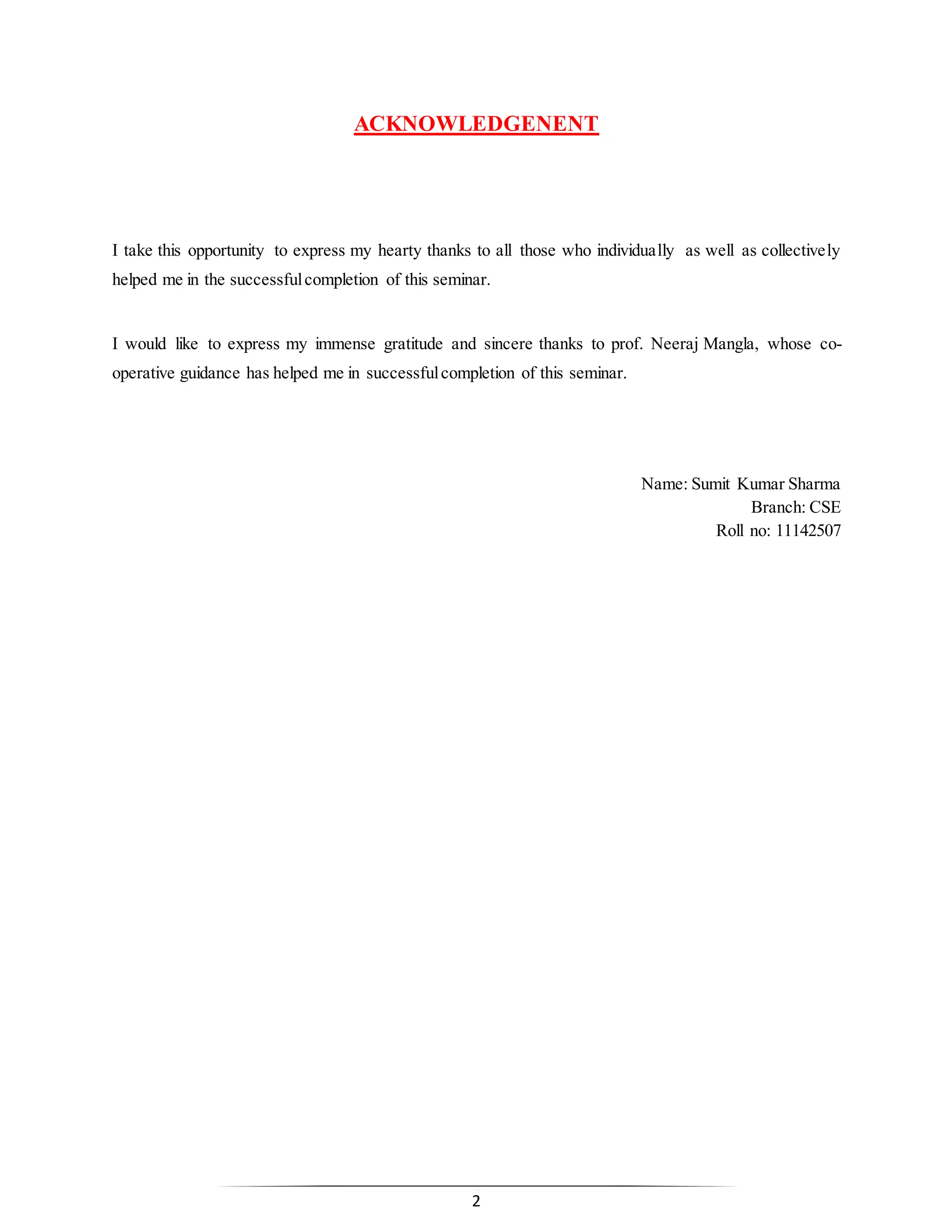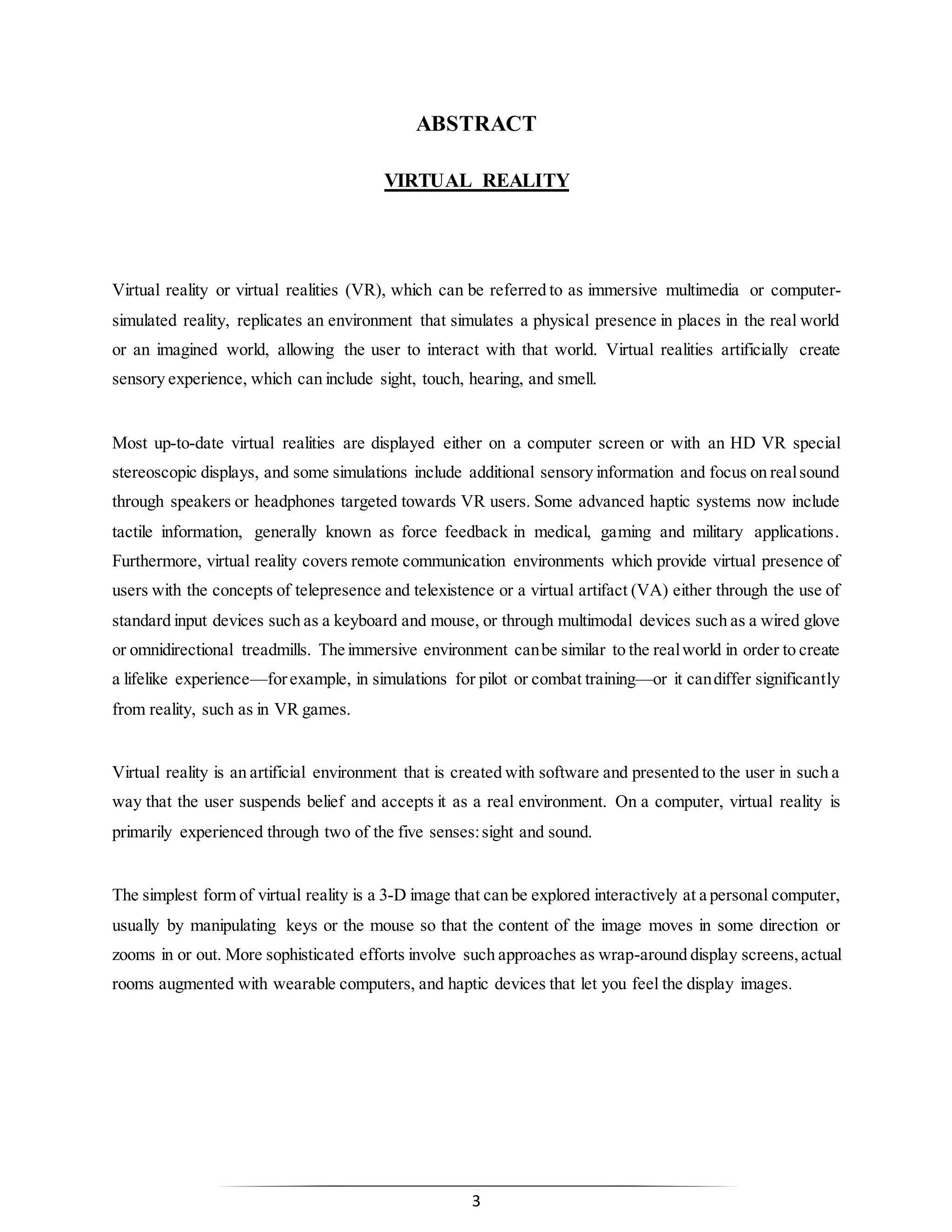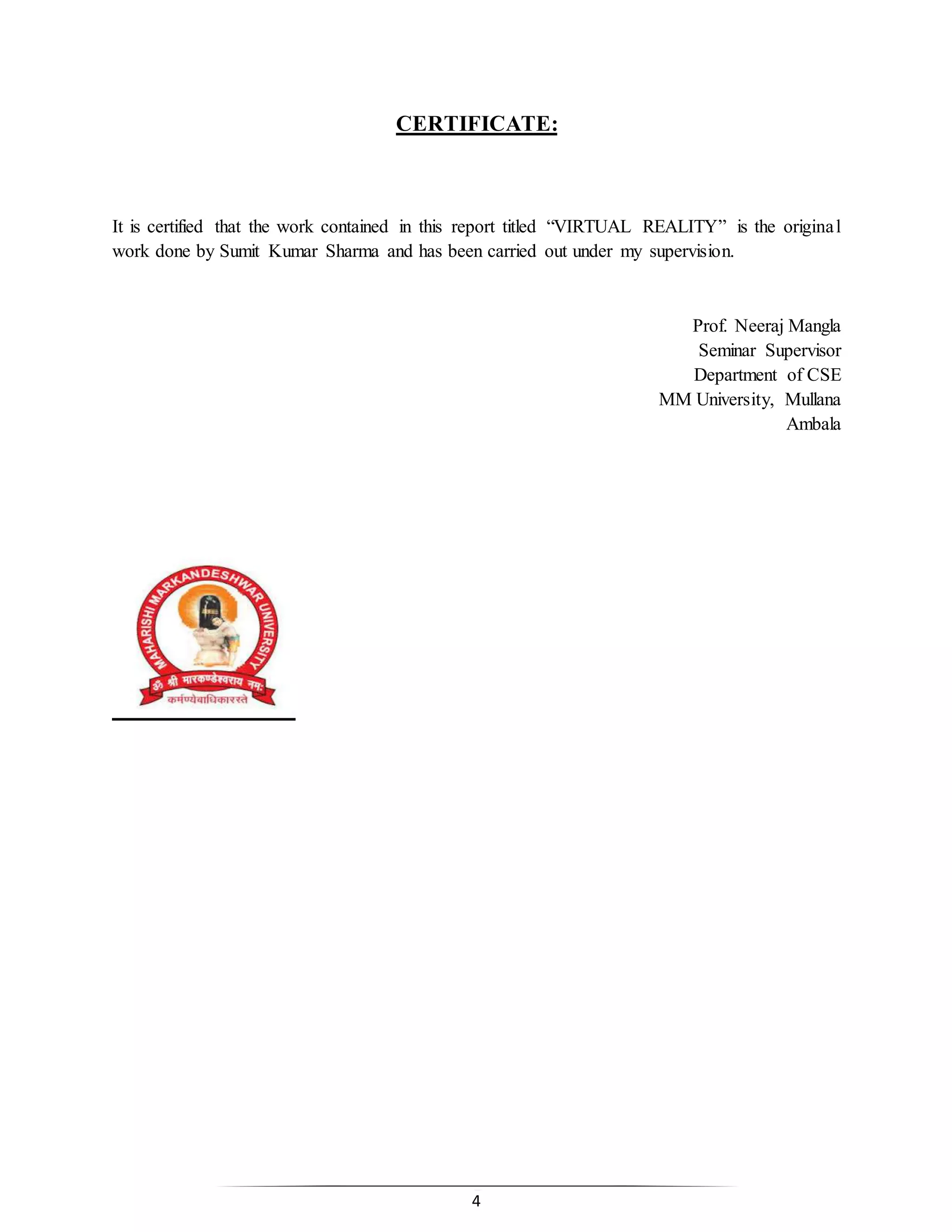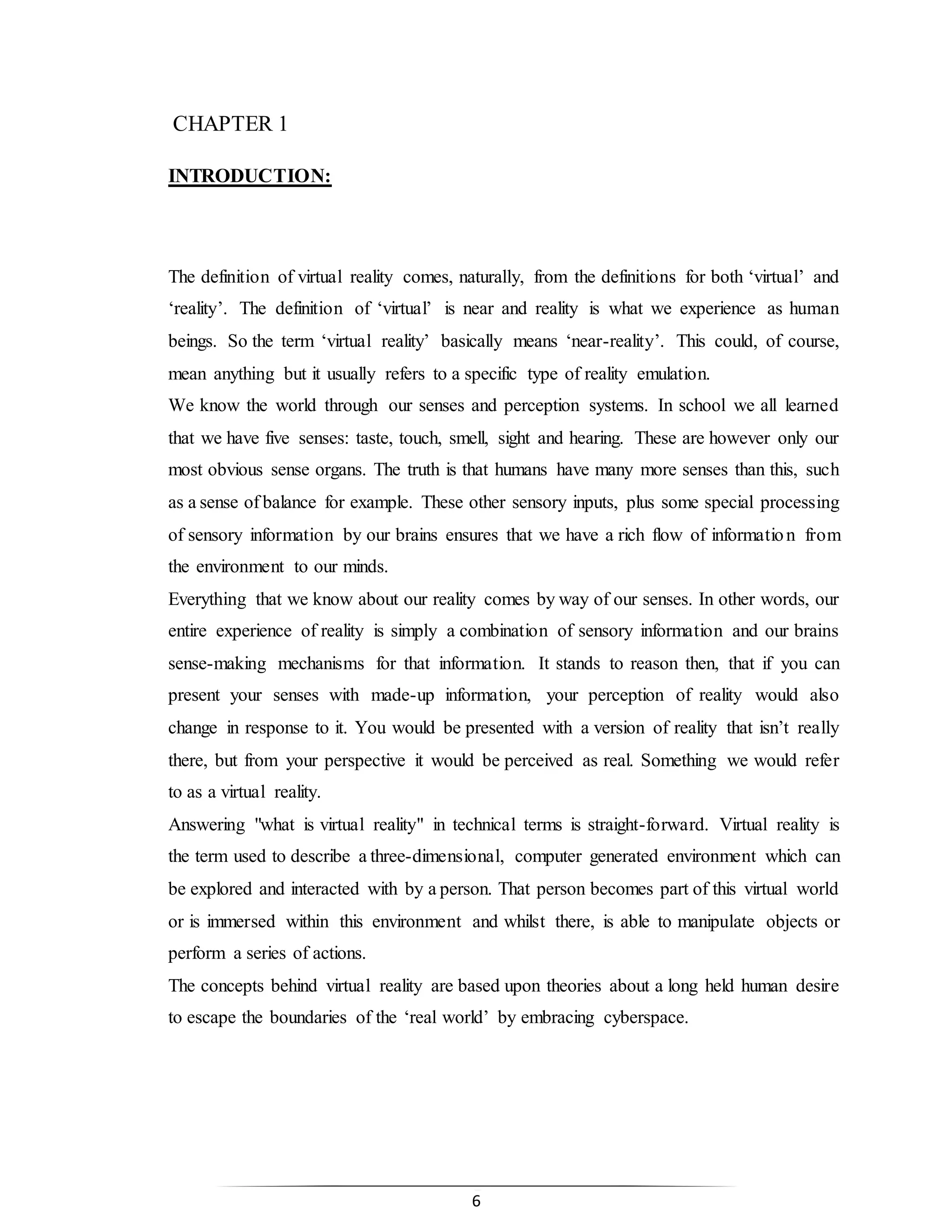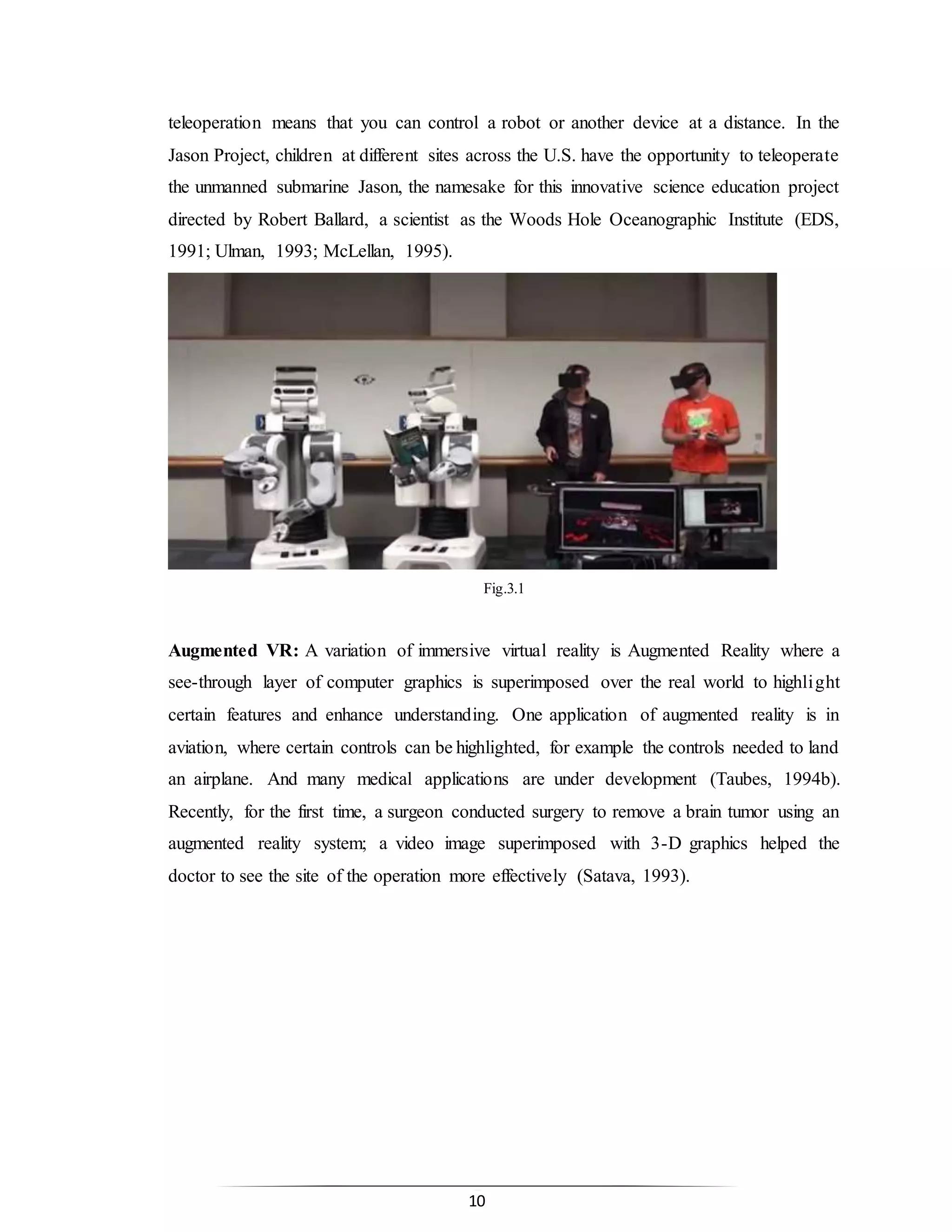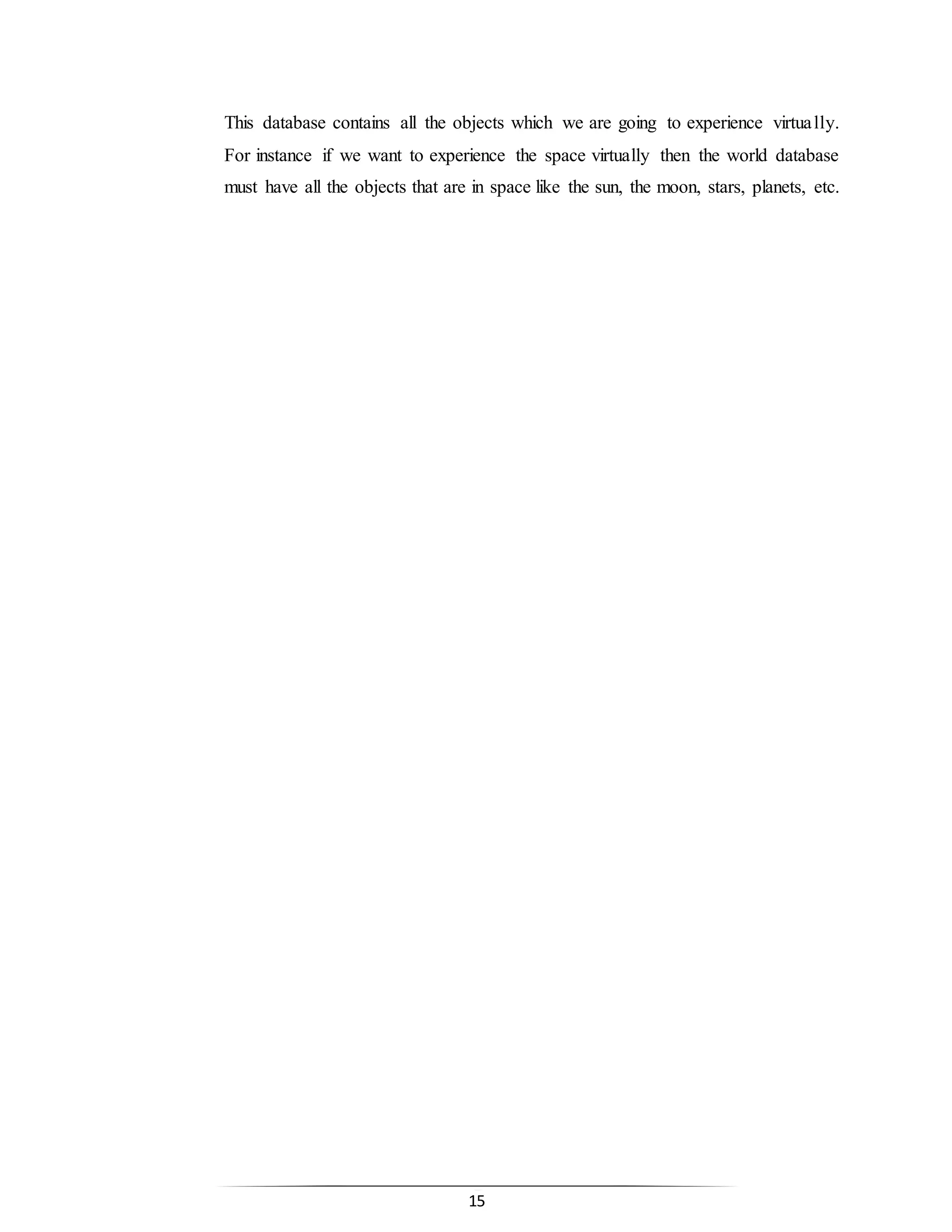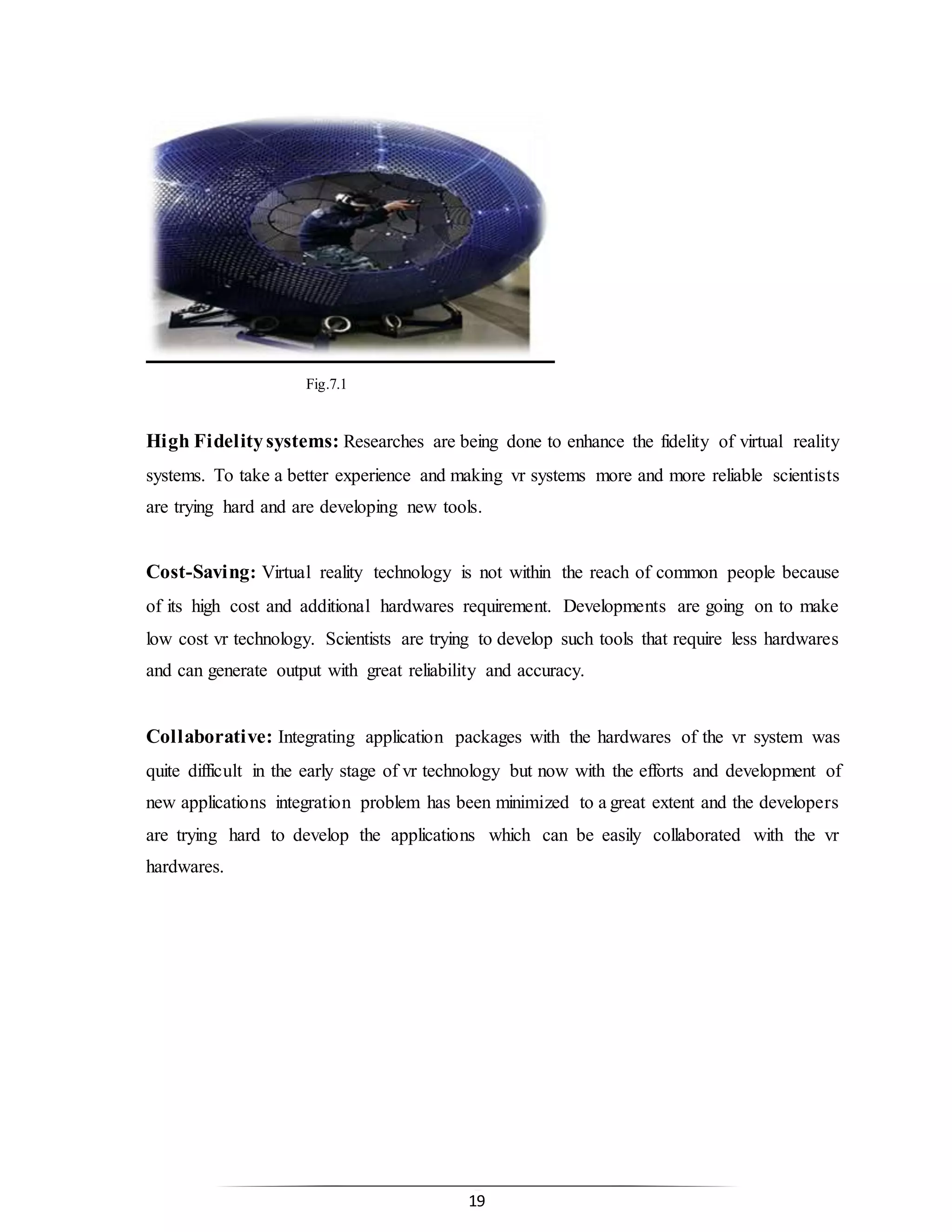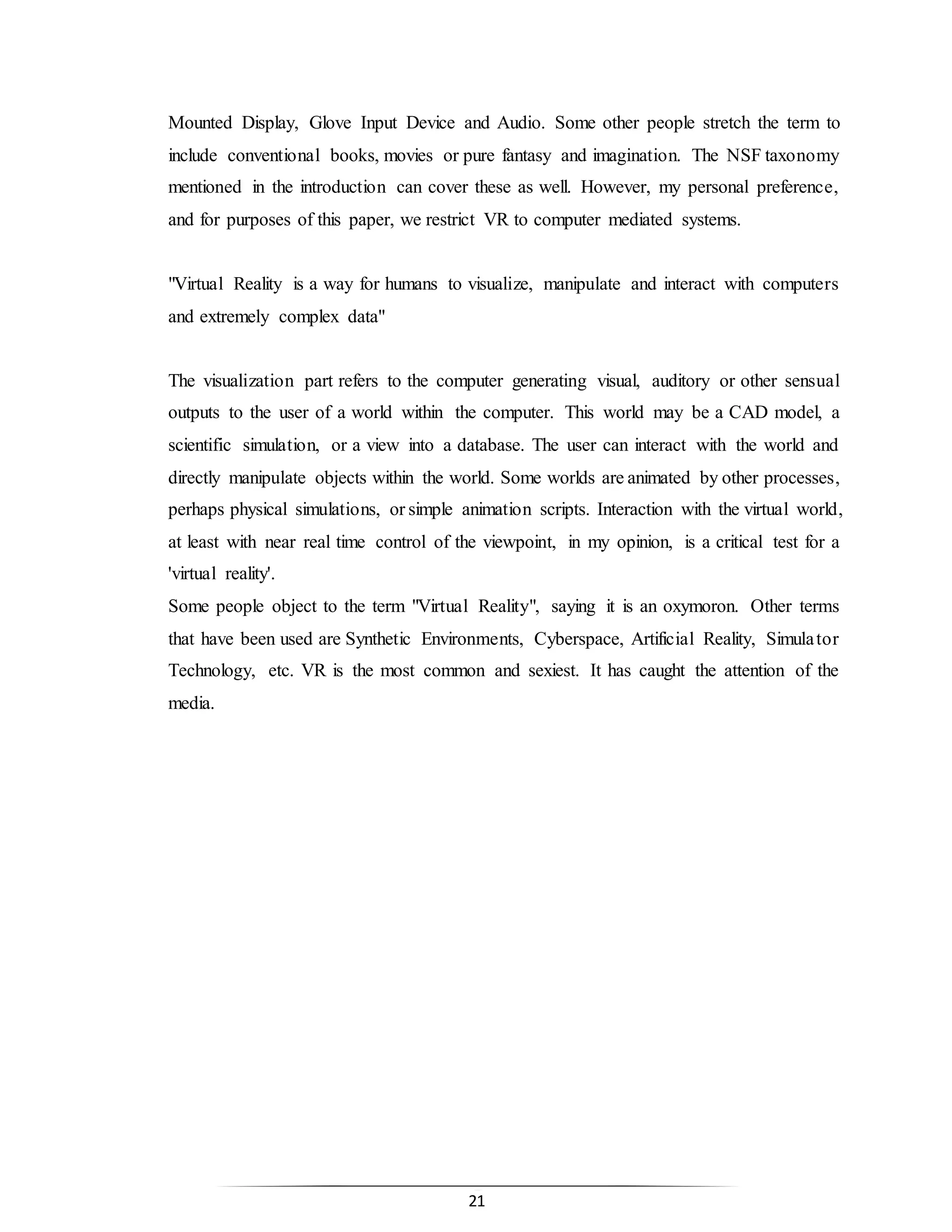This technical seminar report summarizes Sumit Kumar Sharma's seminar on virtual reality. The report includes an abstract, table of contents, and 5 chapters covering the history, types, technologies, architecture, and applications of virtual reality. It was submitted in partial fulfillment of the requirements for a Bachelor of Technology degree from Maharishi Markandeshwar University.

